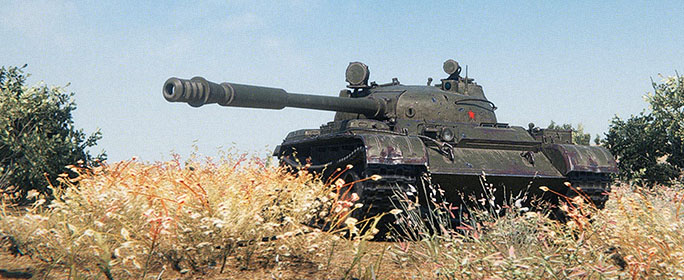Update 9.9: Graphics Changes

In Update 9.9, the graphics of World of Tanks were upgraded. Methods of anti-aliasing were updated, shadows were modified, lighting improved and game client performance was streamlined. A lot of work was done to improve the overall stability of the graphics – now you’ll see less “twinkling” in various post-effects (HDR Bloom, HBAO, RO, etc.). Below you will find examples of how these improvements work and how they look in the game:
Improved Anti-Aliasing
With version 9.9, a new method of full-screen anti-aliasing was introduced into the game – Temporal Super Sampling Anti-Aliasing (TSSAA).
 |
 |
 |
 |
| Anti-Aliasing off | FXAA | TSSAA (low quality) | TSSAA (high quality) |
About Anti-Aliasing
Anti-Aliasing is a technique used to remove the aliasing effect on edges of objects.
Of all anti-aliasing techniques, TSSAA can be distinguished by excellent quality and general stabilization of the image. It removes visual noise and pixel vibration on thin objects, as well as the twinkling of glossy surfaces during movement.
Unlike FXAA, which is already used in World of Tanks, TSSAA is a highly efficient temporal method that applies anti-aliasing not only to the current frame but also to some frames that were rendered before, restoring the old positions of pixels by using their velocity. This creates smoother and more cinematic images in the game, while only slightly increasing the load on your video card. Also, unlike TXAA, TSSAA is not confined to a particular manufacturer and works for the entire spectrum of video cards that support improved graphics. For version 9.9, TSSAA was written from scratch to adapt it to BigWorld engine modification used in World of Tanks.
The TSSA algorithm will be available in two variants:
- TSSAA-LQ is a lighter variant of the new anti-aliasing method, using fewer previous frames during image processing.
- TSSAA-HQ is the highest quality anti-aliasing method.
Even if your computer has a weaker processor, you may not notice any difference in performance when comparing the maximum and lighter methods, as the main load falls on the video card.
Currently, we are working on how to improve the reconstruction precision and, consequently, to sharpen the image when seen from a distance.
Revised Shadows
Update 9.9 thoroughly revised the shadowing effects. This has resulted in higher quality and a greatly-reduced load on the processor and video card.
- With the new algorithm, you do not have to calculate shadows from static objects for every frame over and over. What is also nice about this approach is that you get “soft shadows” without creating any external load on the computer. The feature is called Variable Penumbrasoft Shadow (a realistic optical effect of shadow blurring, occurring as the distance from the source object increases).
- Shadows from dynamic objects became much lighter and also feature “soft shadows” at maximum settings.
- Contact Shadows, or Ambient Occlusion, were improved, too. Previously, they were reproduced by the Horizon-Based Ambient Occlusion (HBAO) algorithm in the game.
- HBAO was rewritten and streamlined for version 9.9, which increased quality and temporal stability.
- For medium settings, HBAO was replaced with a simpler, but immensely quick and high-quality Screen Space Ambient Occlusion (SSAO) algorithm, which has contributed to better performance. This approach is very efficient for generating the shadows of small objects, such as grass.
 |
 |
| 9.8 | 9.9 |
New Lighting
The Bidirectional Reflectance Distribution Function (BRDF) was improved too. It is responsible for the way the light is reflected at different angles, or absorbed by the surface depending on its roughness (micro-relief). The new lighting model is known as GGX (Microfacet BRDF with a GGX distribution). A cutting-edge real-time rendering technology, it ensures the best physical accuracy.
The changes enable more realistic simulation of a wider range of materials: fabrics, glass/glossy surfaces, as well as various metals that do not resemble steel (e.g., gold, copper, etc.). The effect will be particularly noticeable on tank models that were redesigned into HD quality.
A new algorithm, RO (Reflection Occlusion), was written for the new lighting model BRDF. It was required in order to remove artifacts that arise when reflected light passes through opaque objects. To put it simply, Reflection Occlusion removes light reflection from places where it should not be.
Also, the Bloom effect has become much more stable at the maximum level of post-processing.
 |
 |
| 9.8 | 9.9 |
 |
 |
Optimisations
Besides optimised shadow calculations, Update 9.9 introduces numerous system optimisations in the graphics engine. This improved the graphics and reduced the load on the processor when creating static objects, trees, and effects.
Update 9.9 also features redesigned switching of graphic settings, reconfigured pre-settings, and a simpler scheme for creating fog and bloom.
Roll out and enjoy the game with much improved visuals!






